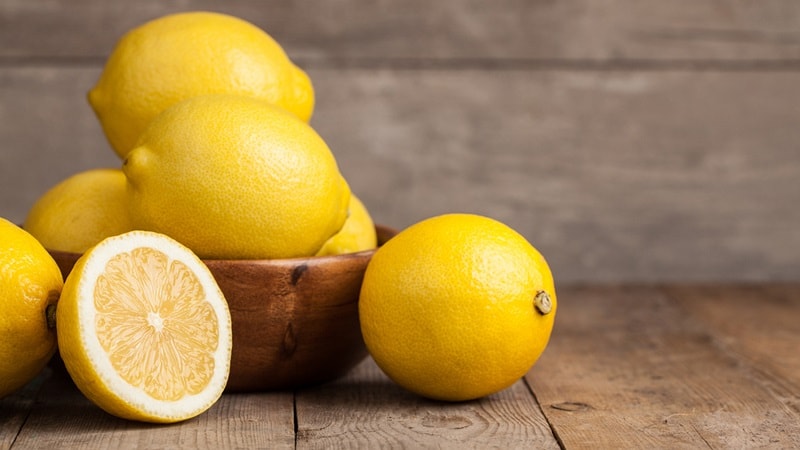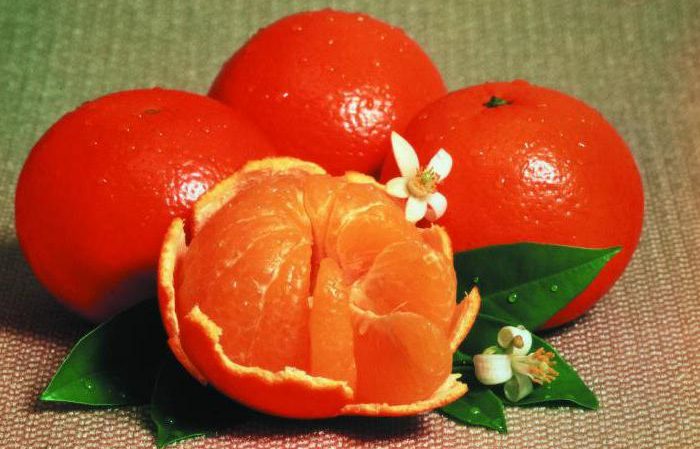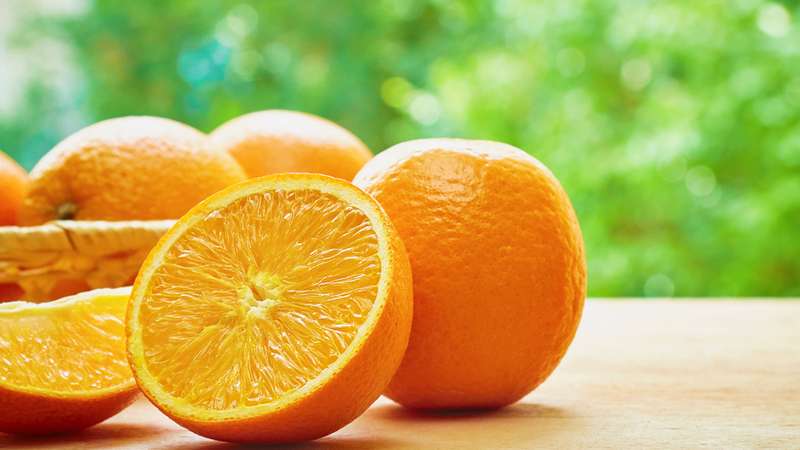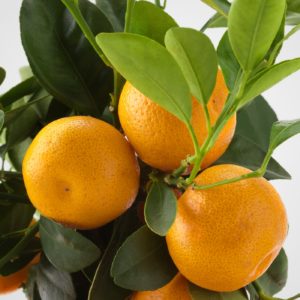What is the name of a hybrid of lemon and tangerine
Citrus fruits are the world leaders in terms of annual harvest. There are about 600 varieties of them. Approximately 20% of the total harvest is consumed in the form of fresh fruits, and the rest is used to make juices, canned food, extracts, etc.
Mandarin ranks second in world citrus production, second only to orange. The fruit is appreciated for its good taste, juiciness of the pulp, easily peeled peel, and beneficial properties for the body. It is most often used to develop new citrus hybrids. Consider what a tangerine-lemon hybrid is, how it was bred and how it differs from the usual fruit.
The content of the article
What is species modification

Hybridization (species modification, crossing) is a method of creating hybrids (from the Latin hybrid - "cross"), based on the combination of the genetic material of two plants that belong to different species, varieties, genera.
This is done by fusion of sex cells (gametes), resulting in the formation of a zygote - the earliest unicellular stage in the development of a new multicellular organism.
Reference. Hybridization is the main and effective method of plant breeding, the success of which depends on the quality selection of parental pairs for crossing.
The main goals of crossing plants:
- increasing resistance to various diseases, damage, pests, weather conditions (drought, cold, frost);
- increased vitality and durability;
- increased productivity;
- increased growth rate;
- improving the quality of fruits, the content of nutrients.
The most important result of hybridization is heterosis - an increase in the viability of hybrids compared to the parental forms. It manifests itself only in the first generation of hybrids, and then gradually weakens.
Lemon is a hybrid of what

Lemon Is a plant of the genus Citrus with the following botanical description:
- Evergreen tree 5–8 m high. The crown is spreading or pyramidal. There are thorns on the branches.
- Leaves are dense, oval, pointed on both sides. The top side is glossy green, the bottom is light green matte. Length - 10-15 cm, width - 5-8 cm. The smell is lemon.
- The flowers are medium-sized white or slightly creamy. The aroma is subtle.
- Fruits are oval, 6–9 cm long. The crust is thin, difficult to separate, light yellow in color. The pulp is yellow, juicy, sour taste.
Unknown in the wild. Scientists believe that the lemon arose spontaneously in nature (through natural hybridization) and developed as a separate species for a long time.
Reference.Lemon is probably a hybrid of citron and bitter orange.
The characteristics of citron and bitter orange as parent plants of lemon are presented in the table:
| Botanical characteristic | Citron (cedrate) | Bitter orange (orange) |
| Plant | Shrub or small tree with long (3-5 cm) thorns on the branches.
Height - up to 3 m. |
A tree with long and sharp thorns on the branches.
Height - 2-10 m. |
| Leaves | Large, oblong, dark green. | Oval, pointed, shiny, light green. |
| Flowers | Large, white, with a red tint. | Large, fragrant, white. |
| Fruit | Large, oval, 12-40 cm long.
The crust is thick (2.5–5 cm), yellow or orange. The pulp is yellow, slightly juicy. The taste is sour, slightly bitter. |
Spherical or flattened, 6-7 cm in diameter.
The crust is thick, bumpy, bright orange. Easily separates from the pulp. The pulp is juicy, orange. It tastes sour, slightly bitter. |
| Origin | Pure kind of citrus plants. | A hybrid of mandarin and pomelo. |
A hybrid of mandarin and lemon - limandarin
There are several names for lemon crossed with tangerine: limandarine, limonium, rangpur.
Reference. In Japan, the fruit is known under the name "haim", in Brazil - "kravo".
Several varietal forms of rangpur have been developed, which citrus growers often use as a rootstock:
- Santa Barbara;
- Tattooing;
- Limeira;
- Citrolime.
Limandarin varieties differ markedly in appearance. For example, Santa Barbara looks like a tangerine in appearance (the shape is more round, the skin is smooth), while the other varieties have more oblong fruits and a rough skin.
Breeding history
The homeland of the plant is India, and citrus has also been cultivated in China since ancient times. It was only in 1813 that it was brought to Europe from the island of Tahiti and differed from modern limandarines in its sweet taste.
Reference. The first rangpur fruit is a cross between Cantonese lemon and mandarin.
Currently, limandarin is grown in many countries: Japan, China, Italy, Brazil, USA, etc. It is cultivated for fruit and in landscape design. Due to its high resistance to drought, it is often used as a rootstock for reproduction of various citrus fruits.
Botanical description
Rangpur is a low fruit tree up to 5 m high. The crown is spreading, with drooping branches. Bark with a purple tint and a few short spines. The leaves are small, oblong-oval, dark green.
Reference. The plant is distinguished by drought resistance, vitality and high productivity.
The flowers are small, single or collected in inflorescences of several pieces. The buds and blossoming flowers are violet, the aroma is delicate, pleasant.
Fruits are spherical, but there are varieties with an oblong shape and a small "neck" at the base. The size of the fruit is small - up to 5 cm in diameter. The peel is dark orange, thin, easily separated from the pulp. Juicy dark orange pulp, there are seeds. The taste is sour.
Chemical composition
Like other citrus fruits, limandarin contains a large amount of vitamins, minerals and other substances. The chemical composition of the fruit is inherited from lemon.
The pulp of the fruit of a hybrid of lemon and tangerine, in addition to water, proteins, carbohydrates and dietary fiber, contains:
- Organic acids: citric, malic.
- Vitamins: C, A, E, PP, B1, B2, B6, B9.

- Minerals: potassium, calcium, magnesium, sodium, phosphorus, iron, zinc.
- Pectins are natural substances found in berries and fruits. They are widely used in the food, confectionery, medicine and pharmaceutical industries as a sorbent and gelling agent.
- Phytoncides are biologically active substances that suppress or stop the development of bacteria and fungi.
- Flavonoids are plant polyphenols that are used as natural dyes, food antioxidants, and substances with tannins and antimicrobial properties.
- Sugar (up to 3.5%).
- Sesquiterpenes are organic compounds of the terpene class. They are used in perfumery and medicine.
- Coumarin derivatives. They are used in the tobacco and perfume industry, medicine.
The seeds contain the bitter substance limonin and the fatty oil found in the leaves and twigs. Essential oils that give rise to a citrus lemon scent are found in various parts of the plant: branches, leaves, fruit peel. The main elements of the essential oil are terpene α-limonene (up to 90%), citral, geranyl acetate.
Beneficial features
Due to its rich chemical composition, limandarin has many beneficial properties:
- strengthens the body's immune system;
- improves appetite;
- makes up for the lack of vitamin C in the body;
- normalizes mineral metabolism;
- quenches thirst;
- has an antiemetic effect;
- has a calming effect;
- increases the acidity of gastric juice, which helps with gastritis with low acidity;
- dissolves uric acid deposits in the joints;
- improves bowel function;
- has an antioxidant effect;
- reduces fatigue.
Recommended for use in the treatment and prevention of vitamin deficiency, diseases of the gastrointestinal tract, rheumatism, atherosclerosis, scurvy, gout, tonsillitis, hypertension.
Interesting! The essential oil obtained from the skin of the fruit also has a beneficial effect on the body. A pleasant aroma improves mental state, helps to cope with stress.
Rangpur should not be consumed with increased acidity of gastric juice, gastric and duodenal ulcers, nephritis, cholecystitis, citrus allergies.
Other types of mandarin hybrids
The history of tangerine cultivation goes back over 3000 years. It was first exported from China in the 19th century and has since become the basis for breeding many hybrids, for example:
- orange;
- calamondine (citrofortunella);
- Clementine;
- agli;
- mandarin quat (orange quat);
- bitter orange (orange);
- citrandarin.
Each of them differs from the parent plants in botanical characteristics and taste.
Breeding history
The first developments for the development of new hybrid plants began to be applied already at the end of the 19th century. Then in Italy, almost all citrus plantations died from phytophthora, and in Florida, due to severe frosts, producers lost almost all of the harvest of lemons and oranges.
In order to protect plants and preserve the harvest, breeders began to actively use hybridization. Thanks to these experiments, the world saw a variety of "improved" citruses, based on tangerines.
What the mandarin was crossed with

As a result of crossing mandarin with other plants, many citrus crops have appeared:
- orange - tangerine + pomelo;
- calamondin - tangerine + kumquat;
- clementine - tangerine + orange-king;
- agli - tangerine + orange + grapefruit;
- mandarinokvat - tangerine unshiu + Hawaiian kumquat;
- bitter orange (orange) - tangerine + pomelo;
- citrandarin - tangerine + lemon.
Description of hybrids
Below is a description of the fruit of hybrid plants:
- Orange - spherical or slightly elongated, with a dense orange peel that is difficult to separate. The pulp is orange, juicy, sweet, with sourness.

- Calamondin - small, with a thin skin. Looks like a small tangerine. The pulp is juicy, sweet.
 Calamondin
Calamondin - Clementine - looks like a tangerine, only the pulp is much sweeter. Contains a lot of seeds.
- Agli - a large spherical fruit with a thick, bumpy skin of a greenish-yellow color. The pulp is juicy and sweet.
- Mandarin quat - large, oval, with a thick orange or reddish-orange peel. The pulp is orange to reddish-pink, juicy. The taste is sweet and sour, with a slight bitterness.
- Bitter orange - spherical or flattened. The crust is thick, bumpy, bright orange. Easily separates from the pulp. The pulp is juicy, orange. The taste is sour, bitter.
- Citrandarin - in shape and color it is similar to an orange lemon, and in taste - to a sweet and sour mandarin.
 Citrandarin
Citrandarin
Conclusion
Hybridization is a breeding method that produces strong and fertile plants. As a result of experiments with crossing different citrus fruits, it was possible not only to achieve a high viability of hybrids, but also to significantly replenish the subset with new species.
So, breeders have bred limandarin - a hybrid of lemon and mandarin with increased drought resistance and high yield. The fruit of the plant looks like a tangerine, but the taste is inherited from lemon.